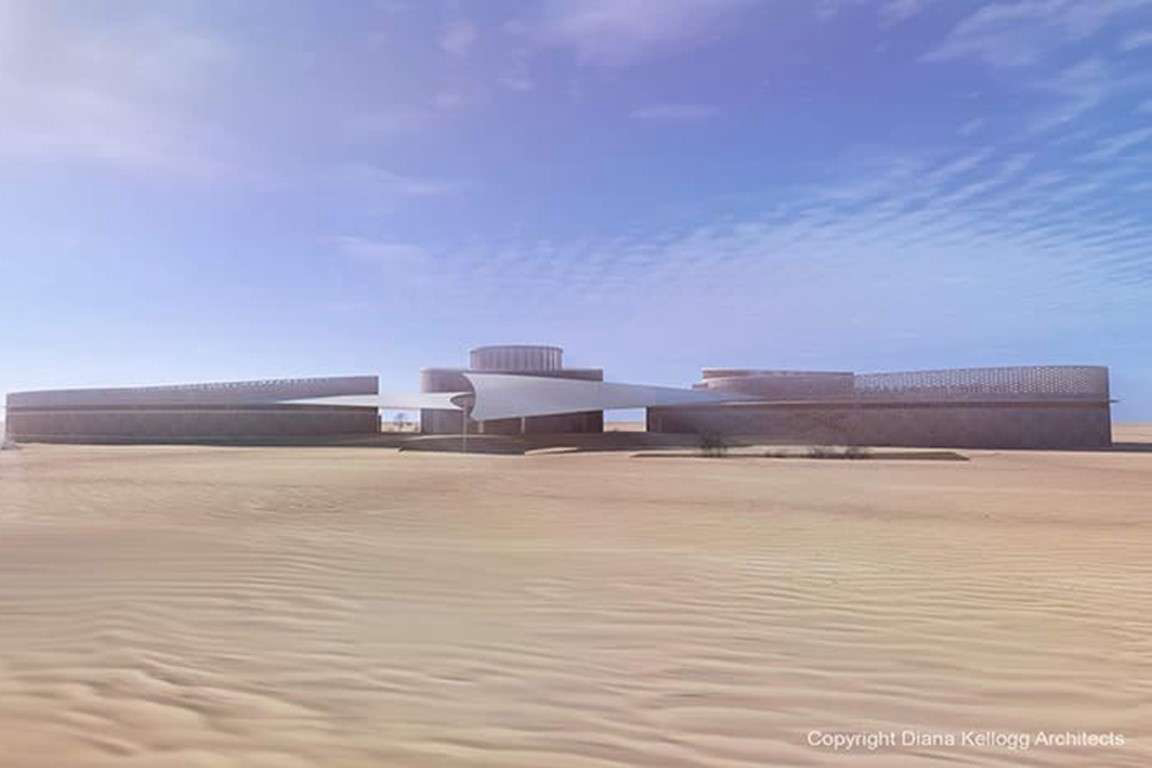
Source: cittaindia.org
Deserts are probably one of the most harmful places to live. The Thar desert in India is the world's 9th largest hot subtropical desert and it is the world's 17th largest desert. It is also known as the Great Indian Desert and it stands as a large barren region in the northwestern part of the Indian subcontinent that covers an area of 2,00,000 km and forms a natural boundary between India and Pakistan. Temperatures in the Thar Desert can exceed around 50° in the summer months, and it is extremely hard to work or operate anything in this weather. And of course, no one can imagine girls studying in the middle of the great Indian desert, but there is an architectural wonder located near Jaisalmer's famous Sam Dunes.
The Rajkumari Ratnavati Girls' School at the Kanoi village, near Jaisalmer, Rajasthan is made of yellow sandstones. Rajasthan is the largest Indian state. As per the Census 2011, the total population of Rajasthan is 68548437, but the female literacy rate of this state ranks lowest to 52.66%, and the male literacy rate is 79.19%. Moreover, around 80% of the population in this state lives in villages, such as Jaisalmer, where female literacy rate barely reaches 32%. The Rajkumari Ratnavati Girls' school works to educate girls to empower them. Here, the girls can study and play in the protected courtyard without worrying about the weather of the Great Indian Desert.

Source: cittaindia.org
Rajkumari Ratnavati Girls' School has an oval-shaped structure that mixes in the landscape of the desert, and it similarly comes with elements of sustainability. The vision of creating this amazing school was initiated by Michael Daube, the founder of CITTA, a non-profit organisation, and it almost took 10 years to complete this project. Michael planned this project in 2010, and he spent the initial years in getting at the right opportunity to bring all stakeholders in place. He spent some time to understand the culture and the dynamics of the region. It wasn't so easy for Michael Daube to convince politicians, royals, celebrities and other stakeholders to be a part of the project. To gain some community support, he also assembled the idea of tourism, culture, art and other distinctive aspects of the region.
Michael Daube operated with a US-based architect named Diana Kellogg. She came to India in 2014, and she got inspired by the beautiful buildings, music and art of Rajasthan. Diana met numerous people from nearby villages to understand the culture of the state. She worked for almost 2 years before she moved toward the final design. She created some feminine designs for girls to develop the energy and environment in the surroundings. She had the initial visions, plans and structures to make the school out of sandstones and bring a beautiful, stunning and remarkable building. Michael Daube did not want the building to function merely as a school. He insisted to create an elegant structure that represented womanhood. Besides being a school, he wished to make it a tourist attraction and serve as a global platform to host events for women empowerment and global programs like Ted talks.
Rajkumari Ratnavati School's campus is known as the ‘Gyaan Centre’. It has the capacity of 400 girls from Kindergarten to Class 10. In another building, girls will be trained in traditional arts like weaving and textiles to preserve dying handicrafts and to make them capable to earn their livelihood. The school similarly has a textile museum, performance hall, and an exhibition place for artists to sell their crafts. A local architect named Karim Khan is the man behind this remarkable building. Though he began working on the structure in 2014, the construction only began in October 2018 and took 1 year to complete. On top of the school building, there are solar panels which work as a canopy and provide shade and power with the building. There is also a cooling system which utilizes geothermal energy. The sandstones which are used in the construction of the school, protect from the heat in the daytime and give warmth during the evening time. The inner walls of the school building are plastered with lime, which insulates the school building. And the courtyard in the complex can store 3.5 lakh litre of water.
There were challenges for the team to create a fully developed school in the middle of the Thar desert. And as the project was funded by a non-profit NGO, the team has to take care of the budgets as well. Michael decided to build the school near Jaisalmer considering the low literacy rate and a high dropout rate of schoolgirls in the state. To help and support these girls and make them empower by educating them, he started this endeavour. Even the logo of the school symbolises healthcare, women empowerment and education. Michael believes that creating a place to explore will allow the girls to grow. Presently, the schools are not entirely open due to COVID-19, and Micahel thinks that his school will prosper once everything gets normal. He believes that this idea will increase the growth opportunities for girls in the region and it will also benefit tourism at the same time.
_________________________
Reference:
- www.vogue.in
- www.cittaindia.org
